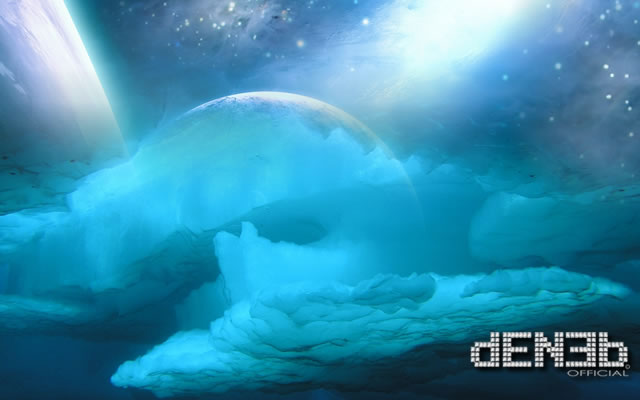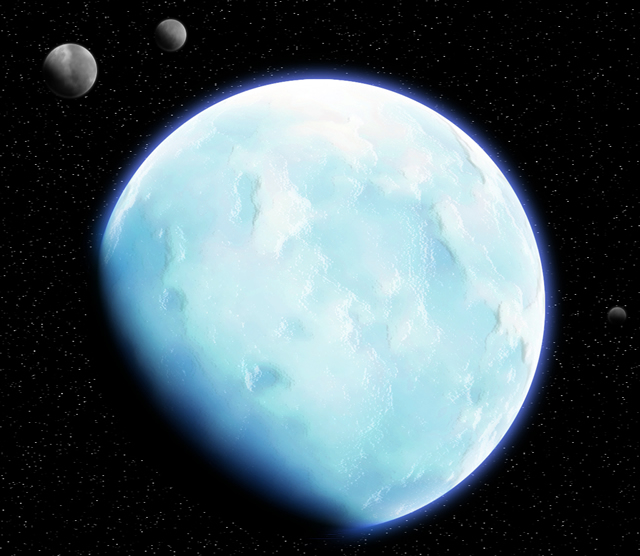
Questo articolo utilizza modelli teorici per stimare l’influenza di ghiaccio e neve sulla abitabilità dei pianeti extrasolari. Questo lavoro si differenzia da sforzi compiuti in passato, includendo l’influenza del clima, e considerando pianeti orbitanti stelle brune di tipo M oltre a stelle simili al Sole.
Molti studi sugli esopianeti si occupano di abitabilità. Gli astronomi cercano di capire se un pianeta appena scoperto possa essere un ambiente compatibile per ospitare la vita e, quindi, da considerare ottimale per concentrare la ricerca su di esso. Un concetto centrale in tali studi è l’idea della cintura di acqua liquida, oggi conosciuta come “zona abitabile”, concetto e definizione già di Carl Sagan. La premessa è che per la nascita della vita come noi la conosciamo, un pianeta deve ospitare acqua liquida. Questo significa che il pianeta non può essere troppo vicino alla stella laddove l’acqua possa evaporare, né può essere così lontano dalla stella in un ambiente in cui l’acqua gela e si presenti in forma di ghiaccio. Trovare i limiti della zona abitabile è molto impegnativo, e in ultima analisi, un pianeta specifico può essere escluso da tali parametri attraverso modelli particolareggiati di individualizzazione. Tuttavia, la nozione di zona abitabile ci può dare una guida approssimativa per focalizzare la ricerca. Molti dati che rilevano l’influenza di vari processi fisici sui confini della zona abitabile, sono stati pubblicati e resi noti. Questa è una ricerca in tal senso.
In particolare, questo documento esamina l’influenza di un processo chiamato circuito di retroazione del ghiaccio-albedo al confine esterno della zona abitabile. “Albedo” si riferisce alla quantità di luce che un pianeta è in grado di riflettere: più alto è l’albedo, più luce viene riflessa, e quindi meno energia assorbe il pianeta. Il ciclo di riscontri relativi al parametro ghiaccio-albedo si riferisce ad un processo in via di raffreddamento che può accadere su pianeti rocciosi come la Terra. Il concetto di fondo è che il ghiaccio e la neve riflettono molta più luce (posseggono un albedo più elevato) di oceani di acqua liquida. Se un pianeta si raffredda, quindi con più ghiaccio e neve, forma, riflettendo più luce, e con il raffreddamento del pianeta ancora di più, il conseguente rilevamento del processo di formazione di neve e ghiaccio. Questo processo può essere elusivo, termina solo quando l’intero pianeta è coperto dal ghiaccio. Alcuni dati indicano che questo è successo più volte nella storia della Terra, con la conseguente formazione di una “palla di neve” simile al pianeta di ghiaccio Hoth rappresentato dal film Guerre Stellari. In questo lavoro, gli autori hanno cercato di esplorare l’influenza dell’effetto ghiaccio-albedo su diversi tipi di pianeta attraverso modelli teorici. Essi variavano la densità e la composizione dell’atmosfera che avvolge il pianeta, così come la stella attorno a cui orbita il pianeta. In particolare si guarda ad una stella di tipo G (come il Sole) confrontandola con una nana di tipo M.

“Hoth” – Star Wars – Credit: www.starwars-universe.com
This article uses theoretical modeling to estimate the influence of ice and snow on the habitability of extrasolar planets. This work differentiates itself from past efforts by including the influence of the atmosphere, and by considering planets orbiting M-dwarfs in addition to Sun-like stars.
Many studies of exoplanets are concerned with habitability. Astronomers seek to understand whether a newly discovered planet is an amenable environment for life and hence a good place to search for it. A central concept in such studies is the notion of the liquid water belt, today known as the “habitable zone” courtesy Carl Sagan. The premise is that for the emergence of life as we know it, a planet must host liquid water. This means the planet cannot be so close to the star that all the water boils away, nor can it be so far from the star that the water all freezes out as ice. Finding the edges of the habitable zone is quite challenging, and ultimately a specific planet can only be ruled habitable through detailed individualized modeling. However, the notion of the habitable zone can give us a rough guide to “hang our hats on”. Many papers looking at the influence of various physical processes on the edges of the habitable zone have been published. This is one such paper. Specifically, this paper looks at the influence of a process called the ice-albedo feedback loop on the outer boundary of the habitable zone. “Albedo” refers to how much light a planet reflects: the higher the albedo, the more light is reflected, and hence the less energy the planet absorbs. The ice-albedo feedback loop refers to a runaway cooling process that can happen on terrestrial planets. The underlying concept is that ice and snow reflect much more light (have much higher albedo) than liquid water oceans. If a planet cools, then more ice and snow form, reflecting more light and cooling the planet even further, resulting in more ice and snow forming. This process can “run away”, terminating only when the whole planet is covered by ice. There is evidence suggesting this has happened several times in Earth’s history, resulting in “Snowball Earth”. (It may also be what happened to the ice planet Hoth from Star Wars). In this paper, the authors sought to explore the influence of the ice-albedo effect on different kinds of planet via theoretical modeling. They varied the density and composition of the atmosphere enveloping the planet, as well as the star the planet orbited. They looked at a G-type star (such as the Sun) and compared it to an M-dwarf.
Source/Continue reading → astrobites.org

















